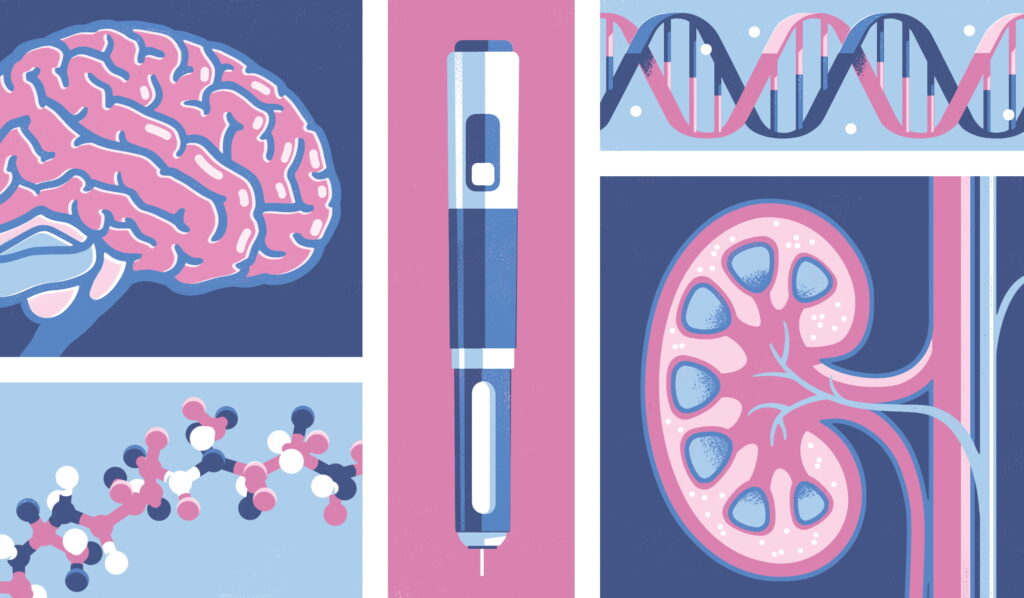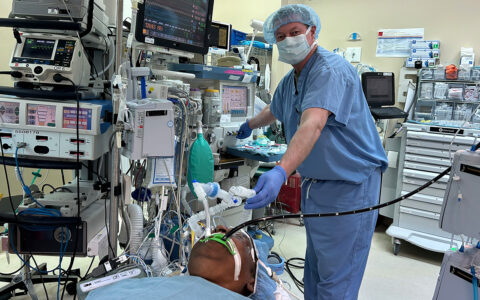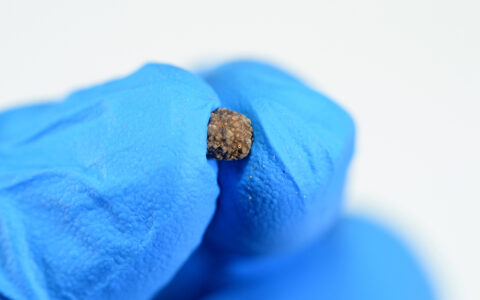Glucagon-like peptide 1 (GLP-1) receptor agonists are likely to work to prevent kidney disease progression in patients with or without diabetes or obesity, according to large study.
The Vanderbilt University Medical Center study used sensitivity to GLP receptors as a proxy for the action of the drugs.
Jefferson L. Triozzi, M.D., an instructor in the Division of Nephrology and Hypertension and the study’s first author, noted that these findings suggest GLP-1 receptor agonists could have broader kidney-protective effects that initially thought.
GLP-1 agonists are produced in many different tissues and are associated with reward-seeking impulses, including but not limited to appetite. Produced abundantly in the duodenum, they reduce a person’s hunger by slowing down the motility of their digestive tract. Along with the duodenum, GLP-1 agonists arise naturally in the brain, lungs and musculoskeletal system, as well as the pancreas and the kidney.
“Some people are naturally, genetically set to respond more strongly to a certain amount of GLP protein. Their receptors are just more sensitive,” said coauthor Adriana Hung, M.D., M.P.H., a nephrologist and epidemiologist at Vanderbilt.
Assessing Individual Sensitivities
For each study participant, the researchers calculated a genetic risk score. The score was based on genetic variants associated with the cumulative amount of GLP1R mRNA from a wide variety of tissue samples. Higher risk scores indicated a higher level of gene expression, which in turn led to higher production of GLP-1 agonists.
The main outcome was a composite measure capturing the occurrence of end-stage renal disease or a 40-percent decline in the glomerular filtration rate.
“Overall, higher genetic GLP1R gene expression was associated with a lower risk of kidney disease progression … accounting for baseline patient characteristics [including] body mass index and the presence or absence of diabetes,” the authors wrote.
Using a Large Genetic Biobank
The research team worked with retrospective data derived from the Million Veterans Program, created by the VA and considered the largest genetic biobank in the world.
The sample comprised 353,153 veterans 18 or older; 93 percent were male. The participants’ median age was 66, and the median follow up was 5 years; 26 percent had diabetes and 45 percent had obesity.
“Although our study was not a clinical trial, the effects were very concordant with what we would have seen if we were using the drug. No matter your BMI, whether or not you had diabetes, we saw the beneficial effects of greater sensitivity for reducing the risk of outcomes in all subgroups,” Hung said.
Importantly, the research team is continuing to test the study’s findings in various population subgroups.
“We are striving to get 100,000 women in another study, and we may be very close to that,” Hung said.
Allowing Control over Obsessions
“It’s phenomenal, just an amazing drug. What’s most important is that it allows people to regulate their obesity. It regulates the obsession with food,” Hung said.
“We are hearing about people using it in so many different contexts – to deal with gambling and alcohol-use disorders and OCD – all sorts of behaviors that are associated with seeking rewards.”
A version of this story appeared in VUMC News.




